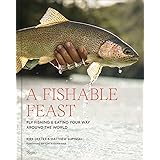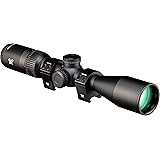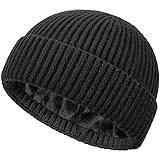Are you struggling to consistently put bass in the boat, despite your best efforts? The video above concisely highlights three critical errors that often plague even experienced anglers. However, understanding why these mistakes are so detrimental, and how to systematically overcome them, is the key to truly elevating your success on the water. This comprehensive guide delves deeper into these common bass fishing mistakes, offering nuanced strategies and expert insights to help you not just avoid them, but leverage advanced techniques for a significant increase in your catch rates.
Far too often, anglers overlook fundamental principles in their pursuit of trophy bass. It’s not always about the latest gear or the secret lure; frequently, it boils down to refining your presentation, making informed color choices, and mastering the art of strategic spot selection. Let’s unpack these pivotal areas to transform your bass fishing approach.
The Finesse Paradox: Optimizing Your Bass Lure Presentation Speed
The video points out a common misstep: working finesse lures like jigs, Senkos, or craws with the hurried retrieve typically reserved for reaction baits. This is a critical error, as it fundamentally misunderstands the predatory psychology bass exhibit when targeted with finesse presentations. Finesse fishing is not about eliciting a violent, impulsive strike; rather, it’s about presenting an easy, irresistible meal that the bass can’t refuse.
Bass, particularly wary, pressured fish or those in cooler water, often require a slower, more deliberate approach. A bait retrieved too quickly offers only a fleeting glimpse, rarely enough time for a discerning bass to commit. Conversely, a languid, methodical presentation allows the bass ample opportunity to inspect the lure, perceive it as genuine forage, and ultimately, engulf it.
Mastering the Slow Roll and Bottom Contact
When deploying a finesse jig, the objective isn’t merely to move it through the water column. Instead, envision your jig as a crawfish scuttling along the bottom, pausing to explore crevices. This requires tactile feedback—feeling every pebble, branch, or soft patch of mud. A proper retrieve involves short hops, subtle drags, and extended pauses, allowing the skirt to flare and the trailers to pulse. The duration of these pauses is crucial; often, the strike occurs when the lure is completely stationary, mimicking a defenseless creature.
Similarly, a Senko or other stick bait is designed to exhibit an enticing, undulating fall. Rushing this fall by reeling too quickly negates its inherent action. Allow the lure to descend naturally, using only enough line tension to detect subtle bites. This often means working your bait so slowly that it feels counterintuitive, but patience frequently yields the biggest rewards. In essence, the less you “work” these baits, the more effective they often become, letting their inherent hydrodynamic design do the heavy lifting.
Decoding the Depths: Advanced Bass Lure Color Selection
Another prevalent mistake highlighted is the inappropriate selection of lure colors based on prevailing environmental conditions. While the video provides a concise rule of thumb—natural colors in clear water, bright or dark in murky water; natural on sunny days, dark on cloudy days—a deeper understanding of light penetration, water chemistry, and piscine visual perception can significantly refine your strategy.
Water Clarity, Light Penetration, and the Visual Spectrum
The core principle behind color selection revolves around how light behaves in water and how bass perceive it. In clear water, light penetrates deeply, allowing bass to distinguish a wide spectrum of colors and details. Natural patterns, such as greens, browns, and subtle shiners, excel here because they accurately mimic indigenous forage. Chromatic aberration, the distortion of color at depth, suggests that specific shades lose their true hue the deeper they go. Therefore, selecting colors that retain their visibility or closely match natural forage at the target depth is paramount.
Conversely, murky or stained water significantly limits light penetration. Here, bass rely more on silhouette and vibration. Bright colors like chartreuse, white, or firetiger create a stark contrast against the dark background, making the lure highly visible. Dark colors, such as black or blue, also create a strong silhouette, particularly effective on overcast days or in very deep, dark water. These aren’t necessarily “seen” as a specific color, but rather as a bold, undeniable shape that predatory bass can easily track.
Beyond Clarity: Matching the Hatch and Reactionary Hues
Consider the forage base. If the water is teeming with shad, a shad-patterned crankbait is a logical choice. If crawfish are abundant, a brown or green pumpkin jig makes sense. However, sometimes the goal isn’t imitation but provocation. Fluorescent and highly reflective colors, especially those with UV active pigments, can trigger aggressive reaction strikes, even from less-than-active bass, by creating an unnatural flash or glow that irritates or intrigues them.
It’s also worth noting that bass possess specialized photoreceptors (rods and cones) allowing them to perceive color across a wider spectrum than humans, including parts of the UV range. Therefore, certain “invisible” colors or UV-enhanced lures can offer a distinct advantage, especially in low-light conditions or deeper water where traditional colors are muted.
Beyond the Obvious: Strategic Spot Selection for Trophy Bass
The final, yet perhaps most critical, mistake highlighted is fishing in unproductive water. Simply “switching it up” by hitting a new spot, as suggested, is a good starting point, but true success comes from understanding why certain spots hold bass and how to systematically locate them. Bass are creatures of habit, driven by instinctual needs for food, cover, and comfortable water temperatures. Identifying these key elements is the bedrock of strategic spot selection.
Structure vs. Cover: The Bass’s Sanctuary
Understanding the difference between structure and cover is fundamental. Structure refers to changes in the lake or river bottom contour, such as ledges, humps, points, creek channels, and submerged roadbeds. These topographical variations act as highways and ambush points for bass. Cover, on the other hand, consists of physical objects bass use for protection or ambush, like submerged timber, rock piles, docks, lily pads, or brush piles.
Productive spots often feature a combination of both. A deep creek channel running alongside a submerged brush pile, or a rock-laden point that drops off into a thermocline, are prime examples. Bass will use these areas to ambush baitfish, regulate their body temperature, or retreat from predators.
Seasonal Patterns and Environmental Cues
Bass migrations and feeding patterns are heavily influenced by the seasons. During the pre-spawn, bass stage on secondary points and creek channel bends adjacent to spawning flats. In the post-spawn, they disperse, often seeking cover and recuperating. Summer sees them move to deeper, cooler water, often relating to the thermocline or dense cover providing shade. Fall triggers an aggressive feeding spree as they bulk up for winter, frequently targeting baitfish schools on main lake points and humps.
Paying attention to environmental cues like water temperature, current, wind direction, and even moon phases can provide invaluable clues. A strong wind blowing into a shallow point can concentrate baitfish, creating a feeding frenzy. Understanding these nuances allows you to predict where bass will be, rather than simply stumbling upon them.
Leveraging Technology and On-the-Water Observation
The mention of the Fishbrain app is a testament to how technology can revolutionize spot finding. Apps, alongside high-definition sonar with side-imaging, contour maps (both paper and digital), and even satellite imagery, offer unprecedented insight into underwater topography and potential bass habitats before you even launch your boat. These tools allow anglers to virtually “scout” an area, identifying submerged features, depth changes, and potential cover that would be invisible to the naked eye.
Once on the water, keen observation becomes paramount. Look for signs of baitfish, diving birds, surface activity, or even subtle changes in water color. These visible indicators often point to a healthy ecosystem capable of supporting bass. Learn to interpret your electronics, distinguishing between baitfish schools, individual large fish, and bottom composition. It’s not just about finding a “new” spot, but a truly *productive* spot, grounded in the ecological requirements and behavioral patterns of largemouth bass.








